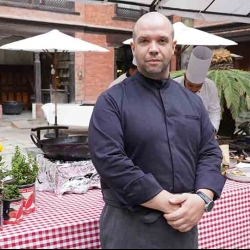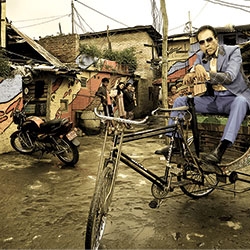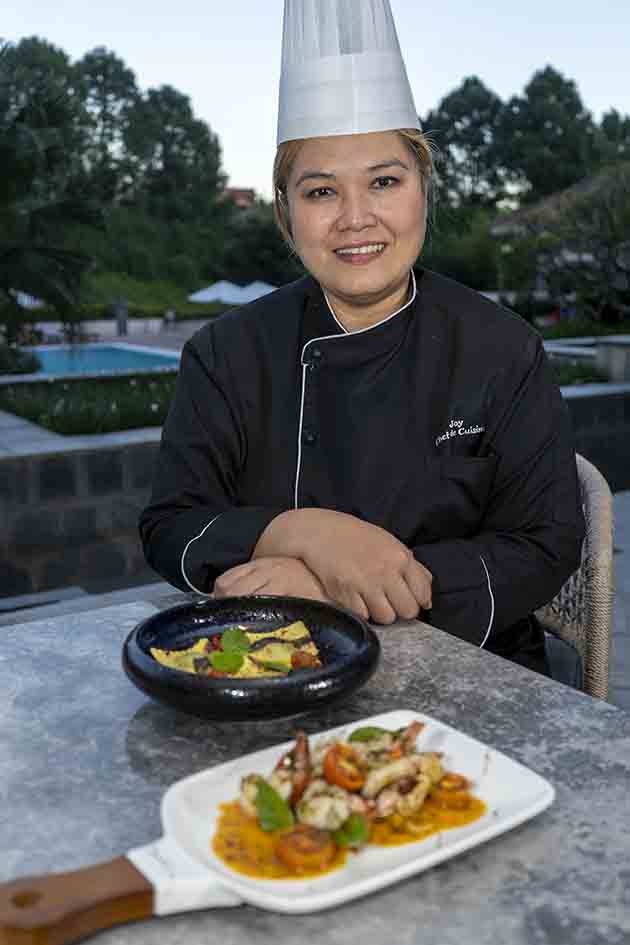
Siriporn Krasae- at aka Joy is here to fill our palates with some tongue smacking dishes. She talks about her journey and how she is adjusting to Nepal, not just as a person, but also in terms of its culinary landscape. She is a Chef-de-Cuisine at the brand new restaurant Sesame of Hyatt Regency Kathmandu.
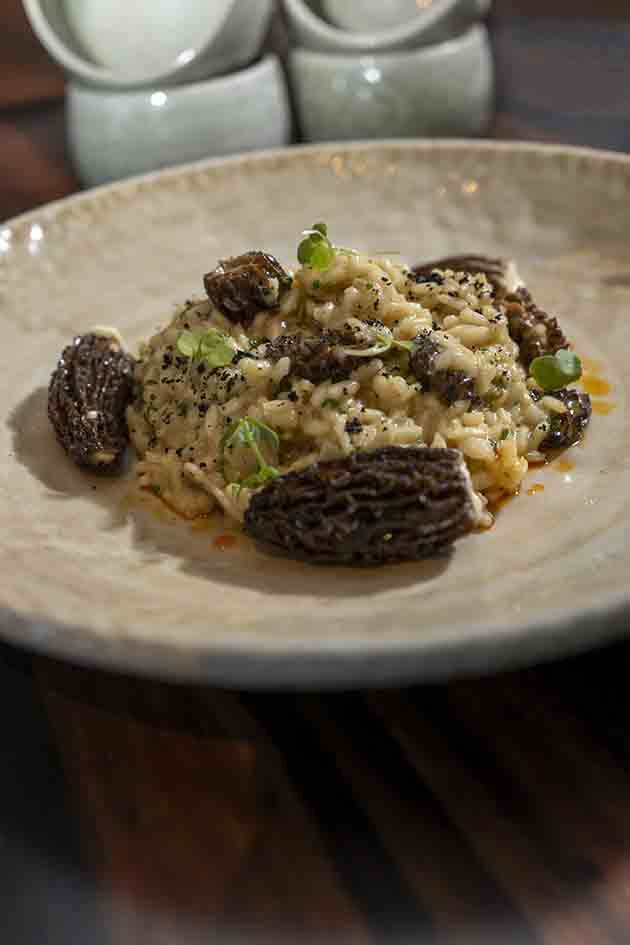
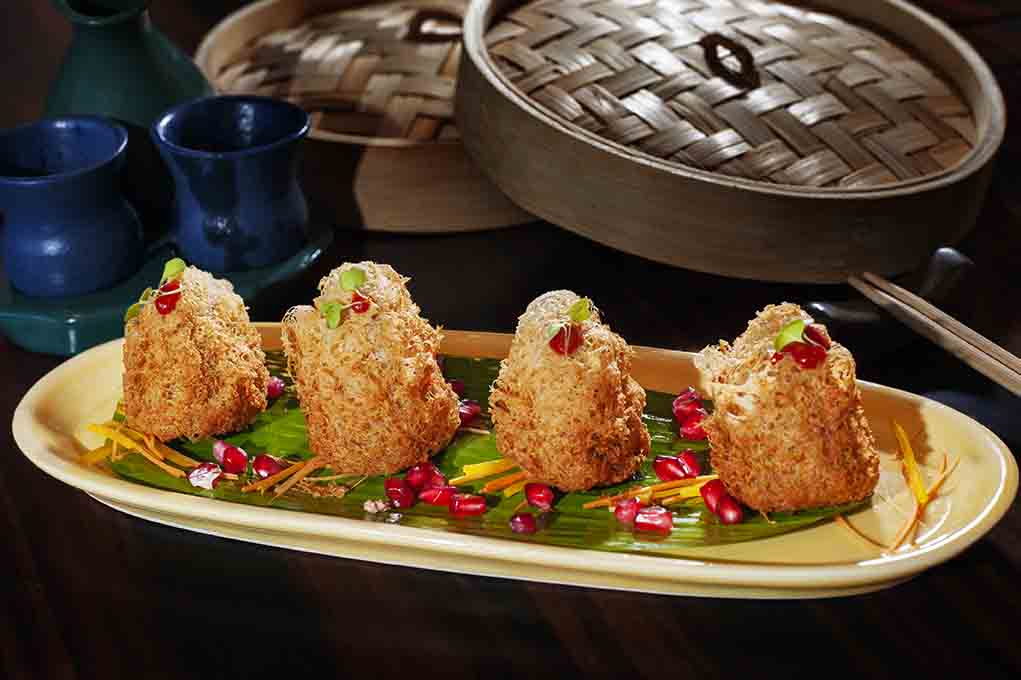
Why is Shredded Crispy Potatoes, Fried Taro, and Green Curry Chicken your signature dish?
We try to bring the products but we get high quality potatoes here too. In Shredded Crispy Potatoes, we use the local product; we get it fresh off the market. When we serve Asian cuisine, we have to bring in some fresh, local ingredients to get the taste. Plus, an entire family can enjoy this dish. You can share it with others, mainly your loved ones. It’s like sharing that joy and love. We serve it family style here and it is a popular appetizer.
Fried Taro is fried dim sum; it is also a popular appetizer. I wanted to show that dim sum can be fried too and it can still be very delicious. It can be done in many ways. It is a part of dim sum that people never knew about and I want to show how it is done. But there are lots of people who prefer it steamed.
Green Curry Chicken is an entree. It is also a Thai dish. I grind lemongrass and put it in the curry which gives it its fragrance. I love its flavor and fragrance. We can add some lemon leaves as well. We have a garden in the backyard where we grow them; that is how we maintain quality.
Why did you choose Sesame to work?
It is a new challenge for me. I take care of Asian cuisines in this restaurant. We are planning to increase the number of Asian cuisines served at Sesame. Now, we are focusing on authentic Chinese and Thai food because Asian tourism is growing steadily. I just came from China where I was a Thai chef at the Sheraton there.
How popular are Thai dishes in Nepal?
In Nepal, many people know about papaya salad and Tom Yum soup; Nepalis enjoy them. But I want to show the variety within the Thai cuisine also. In general, I have found that Nepalis love Thai food. But there aren’t many Thai restaurants around; it is not mainstream yet.
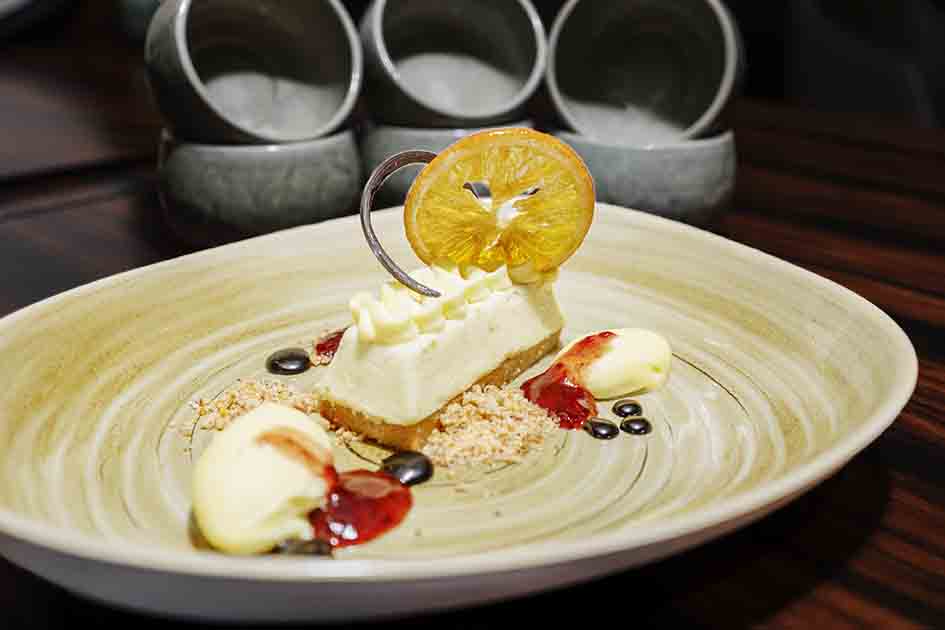
When did you decide to become a chef?
It has been a long time; we have to go approximately 20 years back. I went to learn English with a teacher as in Thailand, not many people can speak English. Her nephew was studying hospitality and he found it quite challenging. But I love challenges, so I decided to pursue culinary arts. That is how I decided to become a chef. I see many new faces everyday in the restaurant. You encounter many problems and I enjoy solving them. I love to handle them; there is no fixed routine here and there are changes every day. There’s planning, setting menus, quality control and cooking. So, I love that too about my job.
What is your favorite dish found in this restaurant?
I like to try everything; maybe a salad, something steamed or there are tons of great choices available here.
What is the most memorable moment while working?
Team work; I enjoy team work as I hate working alone. Hotel organizations have big teams and you are always a part of a team. We work hard together as we have to get everything right as a team.

What do you do differently while cooking in a restaurant and while cooking for yourself?
If I have to cook for my family; let’s say for my mom. She is getting old, so nutrition is very important. I have to keep in mind if she has high blood pressure, diabetes, or some other health issues. So, before we serve food in my house, I need to know about the health of my family. My mom, she cannot eat oily food. So, I might cook something healthy for her like a salad or some soup. But in a hotel, we have a menu and we have so many dishes on the menu. We work in teams and we have excellent training to cook those dishes. The waiters will tell us what the guests want specifically or what they do not like. So, we are basically customizing the dishes for the guests. Some guests that come don’t like onions. So, we will see if there’s onions in the dish the person has ordered. We have to coordinate and see if we can make the dish without onions or if they want to order some other dish that would make them happy. That is how we work.
Do you see existing Thai restaurants as a competition?
No, here I have heard about a pan-Asian restaurant. I have gone there and tried their food. There is definitely a difference. We make it differently and we also serve it differently. We don’t want our dishes to be Indo-Chinese. We want it to be authentic Chinese or Thai.
What differences do you find between Thai culinary traditions and Nepali-Indian culinary traditions?
In Thai culinary traditions, we have 99% non-vegetarian dishes. But here, there are many vegetarians, maybe 40% vegetarian. There are so many people who don’t even have onions and garlic and are pure vegetarians. We give them papaya salad or something with tofu. In Thailand, we use sauce, but here, we have to use soya. There are cultural differences too. Some cultures are strictly vegetarian who refrain from onion and garlic in their meals. But in Thailand, everyone is non-vegetarian. One of my friends visited Thailand, and he cried because he is a vegetarian.
What do you like to snack on when you are down and low; something like a comfort food?
Pad-ka-pau. It is rice and meat with garlic, chili and basil. I prefer it stir fried. You can choose whether to have it with chicken base or pork base. Sometimes, it is served with seafood.
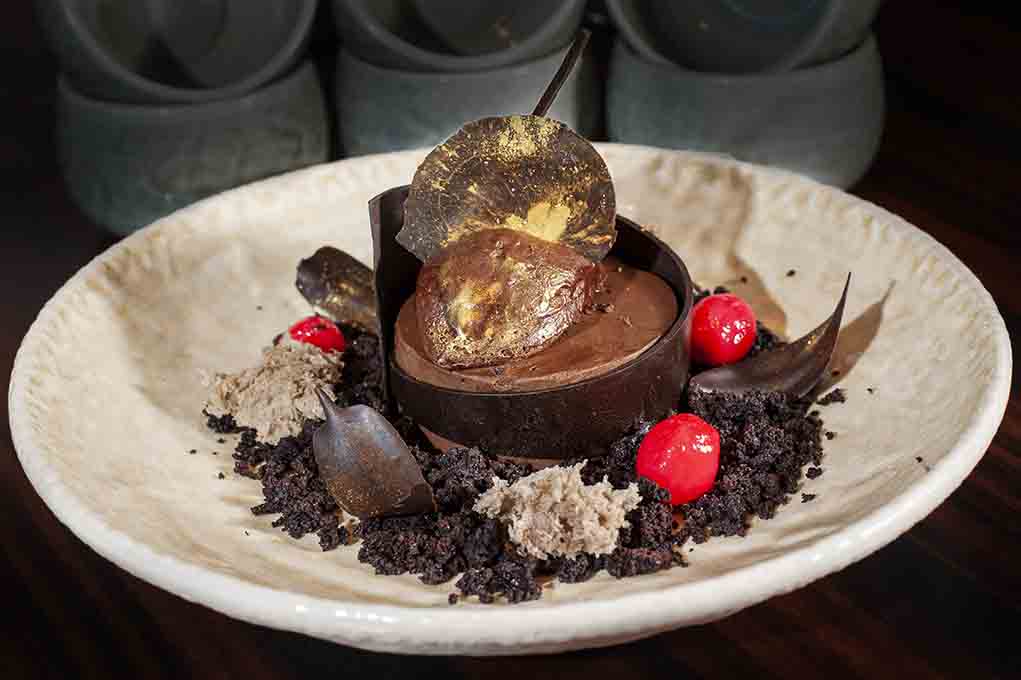
What challenges do you face while working?
Ingredients! It is challenging to get the right ingredients here. But we try our best to get them. There are ingredients that we have to bring from Thailand itself. First, we have to plan the menu. Do we want to put this or that on the menu? But when we check the market, we cannot serve with those things. We have to change the menu. We only use the highest quality ingredients. On top of that, we are a new restaurant. So, the suppliers prioritize the older restaurants with whom they have been working for years. We order and it takes time, even up to months. I am still waiting for some ingredients. For meat and vegetables, we get them in Kathmandu itself because we need to serve them fresh.
Why should people come to Sesame?
If anyone wants to have a good time with their family and feel like having something together, coming to Sesame would be perfect. We serve very tasty food that is as hygienic as it is at your own homes.
How are you finding Nepal? Do you feel like it’s a second home or are you still adjusting to life in Nepal?
Everyone is very kind, and it feels like family, which I love about the Nepali people. In the morning, we greet one another and we help one another all the time. Nepalis are always smiling all the time. It is like a second home to me. They care; we have fun together. I don’t feel tired. I don’t find it hectic while working with these wonderful people. They are so warm, but time is still short, so we have to find time from work to actually enjoy one another’s company and friendship. With the Nepali people, time flies so quickly.




